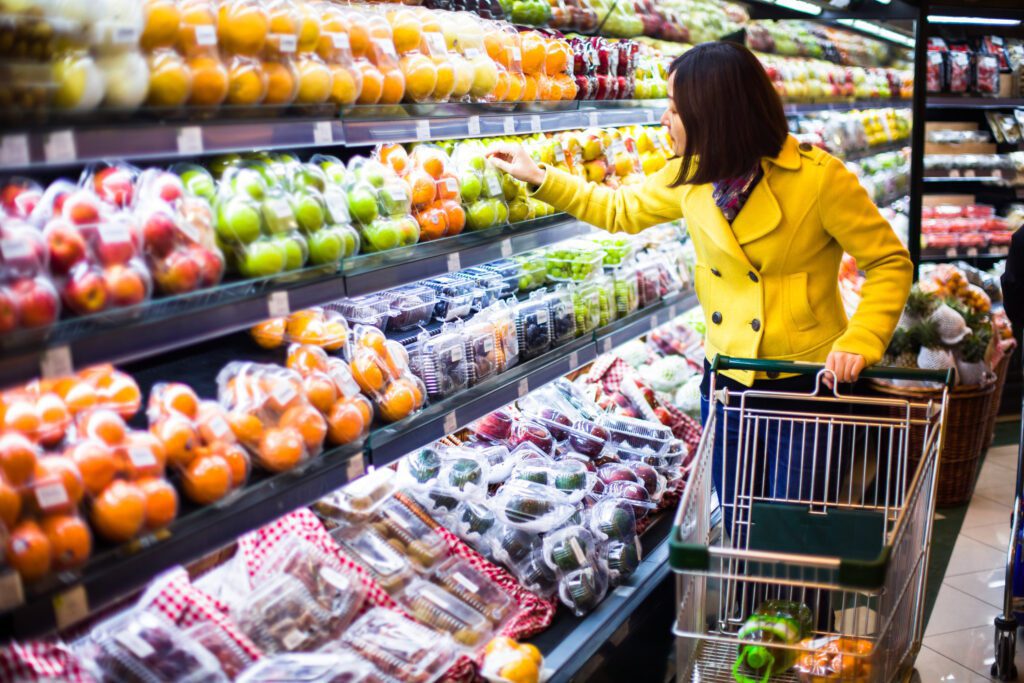As the world continues to deal with the grim spectre of surging inflation this year, countries worldwide are scrambling to contain runaway prices whilst also attempting to prevent their economies from entering deep recessionary territory. Few sectors have experienced more pronounced price appreciation—and contributed more significantly to the global inflation frenzy—than food. Whether agricultural commodities, food and beverage products, or even ancillary industries such as food-processing equipment, it has undeniably been a year for investors to broaden their exposures to the food sector.
The most direct way to gain exposure to the food sector is to invest directly in agricultural commodities. This can be done by identifying a specific commodity and investing in futures contracts of said commodity. Or, as is more common these days, one can participate in a fund with exposure to a broader range of agricultural products. The Elements Linked to Rogers International Commodity Index-Agriculture Total Return (RJA), for instance, is an exchange-traded note (ETN) that tracks the performance of the Rogers International Commodity Index—Agriculture Total Return, a well-known index representing the weighted value of a basket of 20 of the most liquid agricultural commodity futures contracts. It is also a sub-index of the broader Rogers International Commodity Index.
The fund was launched in 2007, and as of the end of July, it could claim almost $190 million in assets under management (AUM), which places it at the smaller end. Nonetheless, this ETN has performed solidly year-to-date, generating more than 8 percent gains, while its 1-year, 3-year and 5-year returns are all spectacular, at 20.2 percent, 77.9 percent and 52.8 percent, respectively. The fund’s largest constituents are wheat (20.06 percent), corn (13.61 percent), cotton 11.60 percent, soybean (8.60 percent) and coffee (5.73 percent).
But there’s no denying that the commodities asset class is often highly volatile—seldom more clearly demonstrated than in 2022, it must be added—meaning that terrifying lows can swiftly follow dizzying highs. As such, investors seeking more stability in performance can also invest in exchange-traded funds (ETFs) that focus on food and beverage companies, the performances of which typically do not fluctuate as wildly as that of underlying agricultural commodities.

The Invesco Dynamic Food & Beverage ETF (PBJ) is one such fund—indeed, it is the oldest dedicated food ETF. It invests at least 90 percent of its total assets in the Dynamic Food & Beverage Intellidex Index, comprising securities of 30 US food and beverage companies. These companies are principally engaged in manufacturing, selling or distributing food and beverage products, agricultural products and products related to developing new food technologies. The fund and index are rebalanced and reconstituted quarterly in February, May, August and November.
PBJ thus offers a lower-risk equity-investment option to investors than agricultural commodities, as demonstrated by the fund’s performance over the years. Year-to-date performance stands at 1.7 percent, while 1-year (11.2 percent), 3-year (11.3 percent), 5-year (8.3 percent) and 10-year (10.1 percent) are all more than respectable. Its holdings represent a fairly equal mix of small-cap, mid-cap and large-cap companies, as well as a mostly even division between growth, blend and value stocks. Fund allocations are also relatively more even among its holdings than other food ETFs, with General Mills (5.5 percent), Keurig Dr Pepper (5.4 percent), Sysco Corp (5.3 percent), Hershey Co (5.2 percent) and PepsiCo (5.1 percent) the companies with the largest weightings.
Or, if mature food companies don’t interest investors for one reason or another, they also have the opportunity to expand their horizons and target a more supplementary aspect of the gigantic food ecosystem. For instance, one might be more interested in companies engaged in agricultural activity, thus almost combining many of the desirable qualities of both the aforementioned RJA and PBJ funds—the early-stage, upstream food-industry exposure of the former and the equity (rather than commodity) returns of the latter.
The VanEck Agribusiness ETF (MOO) provides just such exposure. The fund tracks the performance of the MVIS Global Agribusiness Index, which comprises companies involved in agri-chemicals; animal health; fertilizers; seeds and traits; farm and irrigation equipment and farm machinery; aquaculture and fishing; livestock; cultivation and plantations (including grain, oil palms, sugar cane, tobacco leaves, grapevines, etc.); and trading of agricultural products.
Currently, the fund invests in 52 companies, more than half based in the United States. Germany, Canada, Japan, Chile, Norway, China, the United Kingdom, Brazil and Australia make up the rest of the top 10 locations. Perhaps even more surprising is the diversity in sector exposure with Materials (32.5 percent), Consumer Staples (30.4 percent), Industrials (19.3 percent) and Health Care (17.8 percent) the principal constituents.

And with $1.6 billion in assets under management (nearly $0.5 billion of which has flooded in since the outbreak of war in Ukraine in late February), MOO is amongst the largest food/agriculture ETFs in the space. Its near-term performance has been rather mixed, with the month of July enjoying 6.3 percent gains, while three-month and year-to-date performances have been less impressive, at -6.8 percent and -3.7 percent, respectively. Longer-term returns have been solid, however, with 1-year, 3-year, 5-year and 10-year all positive, at 1.34 percent, 12.62 percent, 11.63 percent and 8.34 percent, respectively.
Given the importance investors place on environmental, social and governance (ESG) issues when deciding on which asset classes and investment products they seek to fund in today’s markets, VanEck has also recently launched its Sustainable Future of Food UCITS ETF (VEGI). Eligible companies for the fund must meet certain ESG standards related to food and agriculture sustainability and safety. According to VanEck, this fund “invests in the businesses pioneering new ways to feed a global population of eight billion and rising” primarily by:
- Investing in companies at the forefront of fresh forms of sustainable-food transformation;
- Gaining diversified exposure to companies offering meat and dairy alternatives, organic foods, food flavours or innovative agriculture technologies;
- Accessing companies with the potential to earn half their revenues from the sustainable-food revolution;
- Avoiding companies that violate UN Global Compact Principles, derive revenues from controversial weapons or participate in fossil-fuel sectors, nuclear power, civilian firearms or tobacco.
The fund tracks the MVIS Global Future of Food ESG Index, which comprises the largest and most liquid companies offering products and services related to meat and dairy alternatives, organic foods, food flavours and innovative agriculture technologies. This includes firms with at least 50 percent of their revenues from plant-based or cultured meat, protein or dairy alternatives; vertical or urban farming; precision agriculture, including companies involved with irrigation and smart water grid equipment; greenhouse equipment; autonomous and robotic farming; or agriculture-related equipment. But it excludes agricultural chemicals and plant seeds; food flavours and functional ingredients; and organic or health foods.
Currently, VEGI holds a portfolio of 35 companies, with US multinational ingredient provider Ingredion given the largest weighting (7.7 percent), followed by Canadian dairy firm Saputo (5.4 percent), Irish food company Kerry Group (5.0 percent), US packed-bakery food company Flowers Foods (4.6 percent) and US specialty-performance ingredients firm Balchem Corp (4.6 percent).











